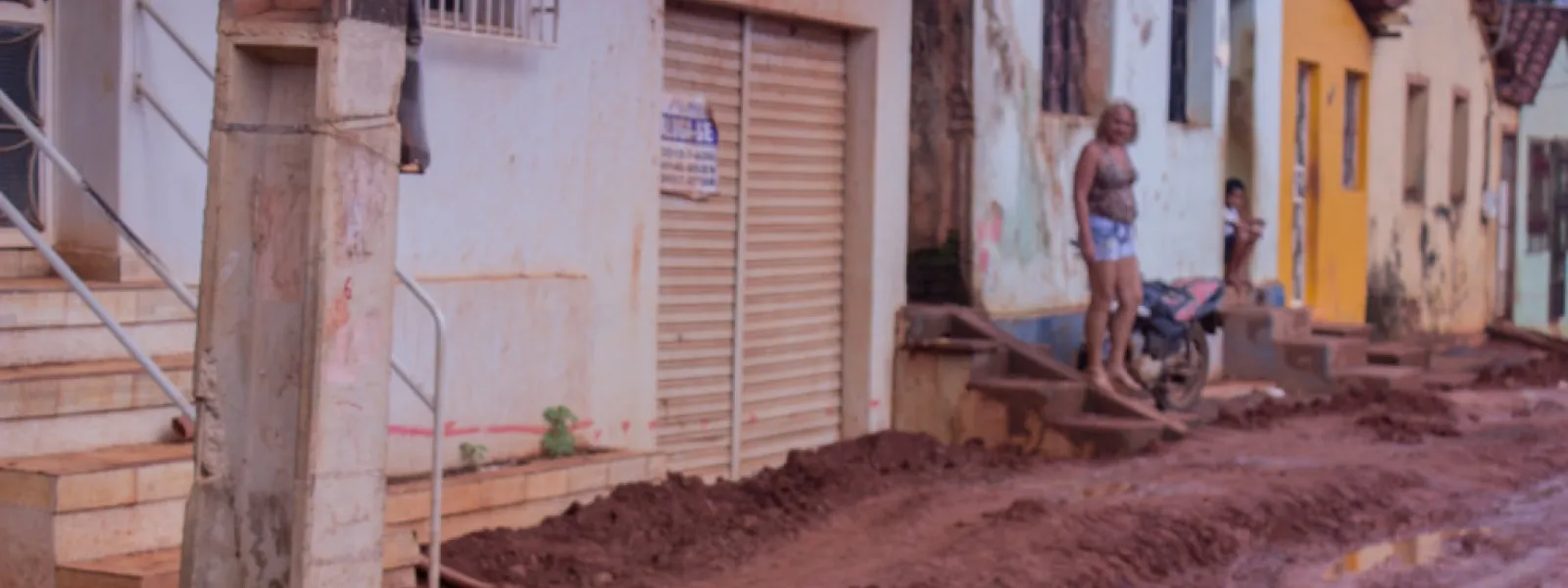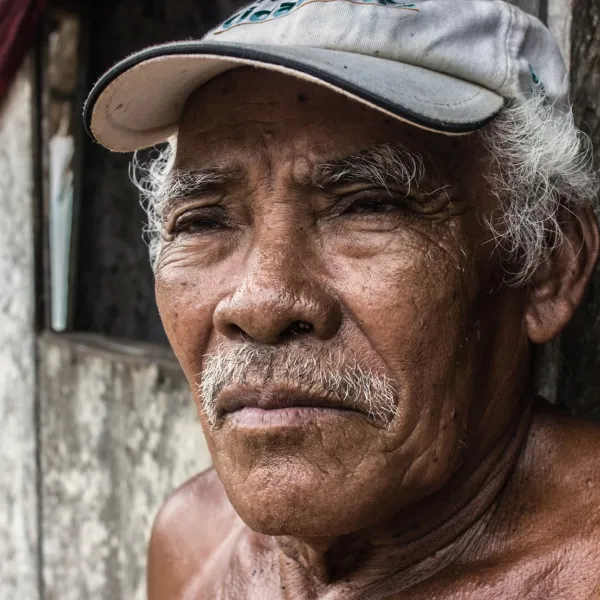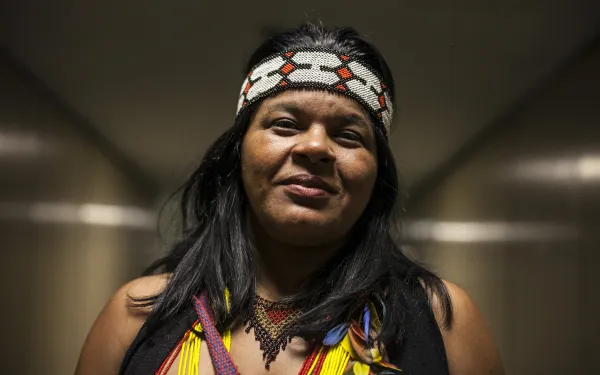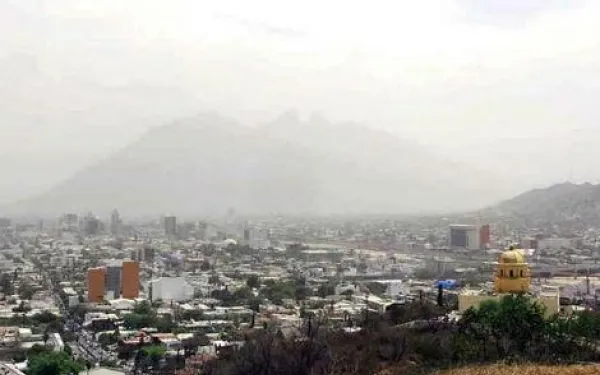
Project
Photo: Maíra Irigaray / Amazon WatchHolding Brazil accountable for the Belo Monte Dam
When fully operational, Belo Monte will be the third-largest dam in the world, constructed in one of the most important ecosystems on the planet: the Amazon rainforest. It sits on the Xingu River in Pará, a state in northern Brazil. The reservoir will cover 500 square kilometers of forest and farmland—an area the size of Chicago.
For the people of the Xingu, construction of Belo Monte has meant loss of access to water, food, housing, work and transportation. At least 20,000 people have been displaced.
The government and construction consortium began to construct the dam without first consulting the people of the region, many of whom are indigenous. They flouted international human rights law, which requires the free, prior and informed consent of affected indigenous communities. Brazil also failed to comply with precautionary measures issued by the Inter-American Human Rights Commission, which were intended to protect the life, health, and integrity of local communities.
Though Belo Monte began operations in May 2016, it is not yet operating at full capacity. In April 2016, a federal court suspended the dam's operating license because the consortium in charge did not complete basic sanitation works in Altamira, the city nearest to and most affected by the dam.
Partners:

Related projects

Indigenous leader condemns Brazil’s rights abuses at United Nations
Speakers highlight violations stemming from Amazon dams at Human Rights Council. Geneva, Switzerland. In a groundbreaking event at the 25th United Nations Human Rights Council, the national coordinator of Brazil’s Association of Indigenous Peoples (APIB) Sônia Guajajara exposed an alarming disregard for indigenous peoples’ rights by the Brazilian government as it rushes to promote an unprecedented wave of large dam construction across the Amazon basin with devastating impacts on their territories and livelihoods. In her testimony, Ms. Guajajara argued that the violation of indigenous rights to prior consultations concerning the federal government’s dam-building plans has set a troubling precedent for the rule of law and the future of Brazil’s indigenous peoples. The side event, entitled ‘Indigenous peoples’ right to consultation on large dam projects in Brazil’, also featured Alexandre Andrade Sampaio, a Brazilian lawyer with the Interamerican Association for Environmental Defense (AIDA), who critiqued the use of a legal mechanism known as “Security Suspension” (Suspensão de Segurança) that allows chief justices, upon request from the government, to indefinitely suspend legal rulings in favor of indigenous peoples’ rights. Among the most egregious use of this legal artifice that was originally created during Brazil’s military dictatorship, is the suspension of court decisions on the illegality of large hydroelectric dam projects, such as Belo Monte, where the federal government has failed to ensure indigenous peoples’ right to prior consultations, as enshrined in the Brazilian constitution. According to Sampaio, the Security Suspension also constitutes an obstacle to Brazil’s compliance with international agreements concerning free, prior, and informed consultation and consent (FPIC), including Convention 169 of the International Labor Organization ILO), ratified by the Brazilian Congress in 2002, and the 2007 UN Declaration on Rights of Indigenous Peoples (UNDRIP). “The alliance of economic interests and political power represent a major crisis for the implementation of indigenous rights in today’s Brazil,” said Ms. Guajajara. “However, even if the government denies our rights, it cannot deny its responsibility to this convention.” “The Suspension of Security Violates Human rights. The very people that could dismiss it are the same ones who personally benefit from its existence,” said Mr. Sampaio. “That is why it is important for the international community to turn its eyes to this matter and request the Brazilian government adopt effective measures that lead to the respect of human rights.” Joint declarations were submitted to the UN General Assembly by a coalition of Brazilian and international groups, including NGO France Libertés. In discussing growing threats to indigenous rights, both documents highlight the Brazilian government’s plans to build a massive complex of up to 29 large dams along the Amazon’s Tapajós River and its tributaries in the next ten years. Lesser-known than the controversial Belo Monte project on the neighboring Xingu River, the Tapajós complex would provoke flooding and other devastating consequences for indigenous peoples and other traditional populations both upstream and downstream of planned dams, including elimination of migratory fish that are a dietary stable and a basis of local economies. The federal government’s rush to construct a series of large dams in the Tapajós region, in the absence of prior consultations with indigenous peoples, has led to growing protests from local tribes, such as the Munduruku, Kayabi and Apiaká people. “We are watching a dark history repeat itself on the rivers of the Amazon where Belo Monte’s tragedy threatens to be reproduced on the Tapajós,” said Christian Poirier of Amazon Watch. “While the Brazilian government claims to respect its indigenous peoples, it is in fact working to dismantle their rights to open their lands and rivers to unconstrained exploitation.” Prior to the side event the delegates met with Ambassador Regina Dunlop of Brazil’s Permanent Mission to the United Nations in order to present their grievances. While the Ambassador stated that the information would be more relevant if presented to government representatives in Brasilia, Ms. Guajajara and Mr. Sampaio countered that these criticisms are frequently ignored by government decision makers until problems are exposed in international forums, such as the United Nations. “Brazil’s reputation is at stake on this international stage,” said Sônia Guajajara. “We are here to bring visibility to the unacceptable prejudice and discrimination suffered by indigenous peoples and to demand that it stops.” The side event in Geneva was organized by France Liberté (Fondation Danielle Mitterand) with support from Amazon Watch and International Rivers.
Read more
Air pollution in Latin America and its effect on our health and climate
By Héctor Herrera, AIDA legal advisor and coordinator of the Network for Environmental Justice in Colombia, @RJAColombia According to the latest report from the Clean Air Institute, Monterrey, Guadalajara and Mexico City (Mexico), Cochabamba (Bolivia), Santiago (Chile), Lima (Peru), Bogota and Medellin (Colombia), Montevideo (Uruguay) and San Salvador (El Salvador) are 10 most polluted cities in Latin America. In all of them, the level of air pollution exceeds World Health Organization recommendations. The scene is similar in big cities across the region: buses and trucks spew out black smoke as people walk under grey skies. This is the backdrop in The Sound of Things Falling, an award-winning novel by Colombia’s Juan Gabriel Vásquez in which descriptions like this abound: “On the corner of Carrera Cuarta, the heavy afternoon traffic was moving slowly, in single file, toward the exit on to Avenida Jiménez. I found the gap in the traffic I needed to cross in front of a small bus whose recently illuminated headlights were catching the dust from the street, the smoke from exhaust pipes and the beginnings of a light drizzle.” Vásquez is writing about Bogota. But he could just as easily have been describing Monterrey or San Salvador. Residents of Latin America’s big cities live enveloped in smog. They breathe in the microparticles of black carbon, ozone, nitrogen dioxide and sulphur dioxide that comes with the air polluted by urban transport, industry and power plants. We can get riled up when a passing truck spits a cloud of smoke in our face. But our outrage fades almost as soon when we think that making these vehicles more environmentally friendly is not our responsibility. Those decisions lie out of our reach in the hands of politicians and bureaucrats. Even so, we must understand that air pollution is a problem that affects all of us and so it is important to be aware of the associated health risks. THE Clean Air Institute's report explains how breathing in air containing a high concentration of pollutants can reduce our quality of life and lead to illness or premature death. Thankfully, the report also makes recommendations on how to avoid this. Worryingly, public health is not the only casualty of air pollution. Another is a faster pace of climate change Black carbon and ozone are short-lived climate pollutants (SLCPs) that remain in the atmosphere from days to decades. While that is nothing compared with carbon dioxide, which remains in the atmosphere for more than a century, SLCPs contribute more to climate change than carbon dioxide. This means that if we were to significantly reduce SLCP emissions, we would get quick results in slowing climate change. You can find more information on AIDA’s page on SLCPs, including descriptions of the main pollutants and the steps being taken to encourage a reduction in their emission. All of what has been said here becomes particularly pertinent when you consider that the population and number of vehicles in Latin America is growing steadily, which unfortunately is not the case for the number of measures being introduced to reduce the level of air pollutants. Whatever our motives – whether this is to improve public health, slow climate change, protect our lungs or those of future generations, or even to simply enjoy a picturesque sunset without a wall of harmful gases blocking our view of the sea or the mountains, one thing is imperative. We must work so that the air in our cities across the Americas is clean and fresh.
Read moreMexico Threatens to Dam a River of Life
Every June 24, the Cora indigenous community celebrates the Day of San Juan. Gathering on the banks of a full-flowing river in western Mexico, they swap figures of the saint and offer him flowers in exchange for food, health, work and other favors. They also pay respect to San Pedro Mezquital, a river that is critical to their culture, livelihoods and spirituality. San Pedro Mezquital is the only dam-free river left in the Sierra Madre Occidental mountains where the Cora live. Starting in Durango, the river flows freely to the Pacific Ocean, where it feeds the Marismas Nacionales, a wetland of international importance and home to 20% of Mexico’s mangroves. But the river could be destroyed. Mexico’s state power company, the Comision Federal de Electricidad (CFE), wants to dam the San Pedro Mezquital to produce electricity, a project that would harm the environment and the human rights of indigenous people in the area, including the Cora. AIDA wants to stop this. We are working with local organizations and scientists to prepare a legal case based on environmental and human rights arguments. The aim is to deter the Mexican government from approving the environmental impact assessment (EIA) that would allow the CFE to start building the Las Cruces hydropower project. We have also launched a national campaign to raise awareness on why Las Cruces should never be built, with a website (in Spanish) focused exclusively on the issue. Arguments Against Las Cruces Dam Here are a few of the arguments against Las Cruces: Blocking the natural flow of the river will increase sedimentation and damage the mangroves of Marismas Nacionales. The project’s EIA fails to evaluate the cumulative environmental impacts and doesn’t use the best available scientific information. Construction of the dam will forcibly displace people and communities, possibly without compensation. The latter is not mentioned in the EIA. Indigenous peoples were not consulted on the feasibility studies of the project or its construction. Reduced river flow will affect the daily activities (agriculture, livestock, fishing, oysters, etc.) that provide food and work for the surrounding communities. Ceremonial locations will be flooded, destroying significant aspects of the spiritual life and ancient cultures of the natives in the area. On any given day, Coras and other local people jump into the San Pedro Mezquital for a swim in waters that provide a refreshing break – and their livelihoods. With your help, we can keep this and other rivers from getting destroyed by large dams like Las Cruces! Thank you!
Read more